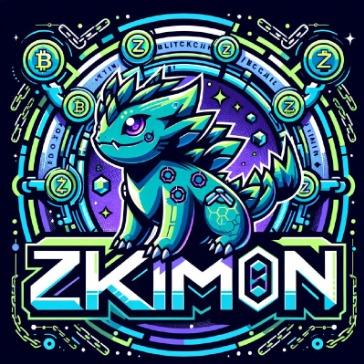zkMON
Location based priviledged on chain gaming and truly own your assets while enjoying best user experience
Created on 10th December 2023
•
zkMON
Location based priviledged on chain gaming and truly own your assets while enjoying best user experience
The problem zkMON solves
-
Fair Gameplay Using Proof of Location:
zkMon ensures fairness by integrating the Haversine formula, verifying a player's physical presence in specific locations for authentic and transparent gaming. This establishes fairness and trust among participants, enhancing the gaming community's integrity. -
Enabling Geo-location Based Games On-Chain:
zkMon merges geo-location gaming with blockchain, bridging virtual and real-world experiences. It makes location-based gaming secure and accessible on blockchains, expanding possibilities for augmented reality and decentralized applications. -
Superior Game Engine Enhancing User Experience:
zkMon boasts a superior game engine blending tech and user-centric design for a fluid, engaging interface. Its intuitive controls, immersive graphics, and responsive gameplay promise an unparalleled gaming adventure. -
Pokemon NFT Collections Enabled for Cross-Chain Trading:
zkMon transforms Pokémon into cross-chain tradable NFT collections using Chainlink's CCIP. This facilitates secure trading across blockchain ecosystems, empowering users to explore and trade Pokémon collections effortlessly. -
Generation of Enemies Using VRF Randomness:
zkMon creates dynamic challenges with adversaries powered by Chainlink's VRF randomness. Each encounter is a thrilling test of strategy, adding unpredictability and excitement to battles.
Challenges we ran into
-
Integrating Chainlink VRF with 2 Generated Random Points on Map:
Aligning Chainlink VRF with two randomly generated points on the map presented initial integration hurdles. Balancing this functionality required meticulous coordination between the generated points and VRF calls. -
Using Chainlink VRF to Determine Attacks and Spawn Locations:
Leveraging Chainlink VRF for attack determinations and spawn locations posed challenges. Ensuring accurate outcomes and synchronizing VRF outcomes with gameplay elements demanded intricate coordination. -
Integrating Frontend with Ethers:
Integrating the frontend with Ethers presented complexities. Ensuring seamless interaction between the frontend and Ethereum network demanded meticulous attention to detail. -
Determining Latitude and Longitude Using Haversine Formula in Solidity:
Solidity's lack of floating-point support posed a challenge when employing the Haversine formula for latitude and longitude calculations. Adapting these calculations to work within Solidity's constraints required innovative approaches. -
Ensuring Universal Compatibility of Chainlink VRF across EVM Chains:
Navigating Chainlink VRF's compatibility across EVM chains emerged as a challenge. Striving for universal contract functionality demanded solutions to ensure seamless integration across diverse blockchain ecosystems.
Tracks Applied (7)
Polygon Track
Polygon
Waku Track
waku
Celo Track
Celo
Base Track
Base
Chainlink Track
Chainlink
Mantle Network Track
Mantle Network
Scroll Track
Scroll
Technologies used
